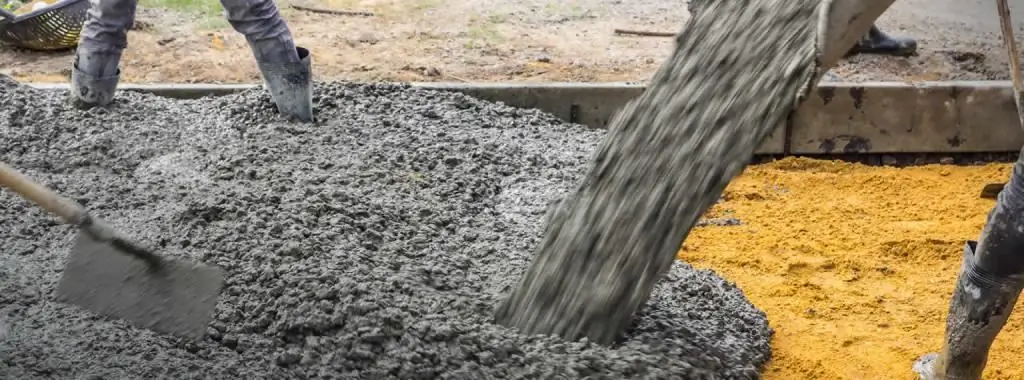2025 Author: Howard Calhoun | [email protected]. Last modified: 2025-01-24 13:10:37
Gypsum has not lost its popularity even today, although it has been known since antiquity. Many modern materials to this day cannot compete with him. It is used in the ceramic, porcelain and faience, oil industry, construction and medicine. Gypsum is in demand in sculpting sculptures, in the production of decorative stone and is divided into different grades depending on the strength obtained.
Definition

Gypsum has a grayish or white color. The grinding of the material is fine, it is obtained from gypsum stone. After processing, natural gypsum is fired at temperatures up to 190 ˚С. The substance quickly seizes, is a fast-hardening binder. It is used for plastering work, in the manufacture of gypsum construction items, gypsum concrete, castings, and also as an additive to binders such as cement and lime.
Roasting of the material takes place in rotary kilns, after which the raw material is ground to form a powder. On theTo date, two varieties of gypsum are known - fibrous and granular. The first is called selenite, the second is called alabaster.
Specifications

If you want to use plaster, you should be interested in grades and their characteristics. There are 12 in total. All gypsum mixtures have very similar characteristics. Among the main features of building gypsum, one should highlight the density, which varies from 2.60 to 2.76 g/cm2. The material has a dense fine-grained structure. In loose bulk, the density varies from 850 to 1150 kg/m2.
If the material is presented in a compacted form, then this parameter varies from 1245 to 1455 kg/m2. A rather important feature is the drying time. Among the main advantages, fast hardening and setting should be highlighted. At the 4th minute after kneading, the gypsum begins to harden, after 30 minutes it solidifies completely. The finished solution in this regard must be consumed immediately.
About melting point and bulk density
To slow down the setting, water-soluble animal glue is added to the plaster. It is also important to mention specific gravity, which is the ratio of mass to the volume it occupies. Volumetric and bulk weight are approximately the same. Quite often, consumers are also interested in what temperature gypsum undergoes. This characteristic is also called the melting point. Heating can occur up to 700 ˚С without destruction. Fire resistance is quite high. Destructionoccurs only 8 hours after exposure to high temperature.

If you want to purchase the described material, then you should be interested in gypsum grades for strength. For example, a building material in compression has a strength parameter of 4 to 6 MPa. If you have high-strength gypsum in front of you, then this parameter varies from 15 to 40 MPa. Dried specimens can be up to three times stronger. The material also complies with state standards 125-79 (ST SEV 826-77).
Thermal conductivity and solubility
Among the characteristics, the ability to conduct heat should be highlighted. Gypsum does not do well with this. The thermal conductivity is 0.259 kcal/m deg/h, which is true for temperatures from 15 to 45 ˚С. Solubility in one liter reaches 2.256 g. These figures are correct at 0 ˚С. If the temperature is increased to 15°C, the solubility is 2.534g. At 35°C, the solubility increases to 2.684g. If heating is continued, the solubility decreases.
Additional Features

Studying the brands of gypsum for artificial stone, you may notice that it is not always convenient that the material sets so quickly. When working with solutions, you must take into account that the hardening dough seizes and rejuvenates when mixed. But if such a solution is applied to the surface, it will no longer have the necessary strength, and when it dries, the material will begin to collapse, become covered with cracks. Therefore, gypsum-based solutionsshould be cooked in small quantities that you can use within a few minutes.
In order to reduce adhesion, clay or lime mortar should be added. For the same purpose, a special moderator from a solution of borax is used. All these mixtures are prepared in water. Hardened gypsum is characterized by high strength and low density, which varies within 1200-1500 kg/m3, this material is almost twice as light as cement. This suggests that the compound is less thermally conductive.
Stamps

Grades of gypsum, as mentioned above, 12. They include some varieties of gypsum, among them it should be noted:
- construction;
- technical; modified;
- forming.
The first is marked as G4 or G5 and is used for plastering and manufacturing various building elements. The technical variety is marked G5 and is a molding model material. When considering gypsum grades, you should pay attention to the modified variety, which is labeled as G16 and is used to seal joints, grout primers and putties.
Molding plaster is marked as follows: G10, G18. It is used in the ceramic, aviation and automotive industries. Among the main areas of application, it is worth highlighting the manufacture of molds for casting alloys and non-ferrous metals. Molding plaster has found its wide use in the manufacture of models for sculptural work.

If you are interested in building gypsum brands, you should pay attention to the markings from G-2 to G-7. These materials belong to group B, and their compressive strength varies from 0.2 to 0.7 MPa, which is the limit of 2 to 7 kgf/cm2. In this case, the onset of setting occurs at the sixth minute. The setting ends no later than half an hour. The brand of building gypsum is called alabaster. This is the only binder that expands and increases in volume up to 1% during the hardening process, but cement and lime paste shrink.
Additionally about brands: construction
Gypsum construction grade is used for the manufacture of parts, plastering and the formation of partition boards. Work with such a solution must be carried out in a short time - from 8 to 25 minutes. The final value will depend on the specific brand. At the beginning of hardening, the material gains approximately 40% of the final strength.
Due to the fact that during hardening cracks do not form when mixing the solution with a lime composition, which is necessary for obtaining plasticity, it is possible not to use different aggregates. The setting time will be reduced due to hardening retarders.

High strength polymer grades
The composition of the high-strength grade is similar to the construction grade, however, the latter has smaller crystals, while the high-strength grade has large fractions, so it has less porosity and high strength. Such a plasteris made by heat treatment in equipment under tight conditions, where a gypsum stone is placed.
Considering the definition of the brand of gypsum, you can understand that the scope of its use is quite extensive. Building mixtures are made from raw materials and fireproof partitions are formed. Gypsum is used to make various forms for porcelain and faience sanitary ware. A high-strength variety is used in dentistry and traumatology. But orthopedic traumatologists are more familiar with synthetic polymer gypsum, on the basis of which gypsum bandages are made for dressings for fractures. Among the main advantages of the polymer brand should be highlighted:
- "light overlap";
- moisture resistance;
- lightness;
- ability to control bone fusion.
The material allows the skin to breathe, because it has good permeability.
Brand identification
If you are wondering how to determine the brand of gypsum, then you should know that marking is carried out according to some indicators, among them should be highlighted:
- strength;
- grinding fineness; setting speed.
The brand can be determined by bending and compression test of standard samples. They have the following dimensions: 4 x 4 x 16 cm. Tests are carried out 2 hours after molding. First, the flexural strength is determined, then the compressive strength. During this time, crystallization and hydration are completed.
According to GOST 129-79, 12 strength grades of material are established. The number after the letter indicateslower compressive strength. For a gypsum binder, the start and end of setting is an important factor. According to these parameters, the material is divided into three groups - A, B, C. According to the fineness of grinding, which is determined by the rest of the sample during sifting, the binder is divided into three groups: coarse, medium, fine. Density can be true and bulk. 1st varies from 2650 - 2750 kg/m3, 2nd - from 800 - 1100 kg/m3.
Characteristics of gypsum G5
This brand of building gypsum has a compressive strength of 5. In bending, this parameter is 2.5. With this composition, you can repair surfaces, close cracks, depressions, potholes and mount electrical installation products. Gypsum allows you to attach beacons and profiles during plastering.
Another area of application of such gypsum is the manufacture of dry building mixes for facing works. The degree of grinding is 14% when sieved through a sieve with cells with a size of 0.2 mm. The compressive strength of the samples is 5 MPa. Setting times vary from 6 to 30 minutes. Considering the characteristics of gypsum brand G 5, you should pay attention to the flexural strength, which is 25 kg / cm2.
Characteristics of gypsum G10
This gypsum is a high-strength, finely ground white powder. In its pure form, it is transparent and colorless, and in the presence of impurities it has a yellowish, gray, brown or pink tint. Gypsum brand G 10 is a fire-resistant non-combustible material that does not have toxic components. Its aciditysimilar to the acidity of human skin.
Compressive strength is 100 kgf/cm2. The normal hardening variety begins to polymerize in the sixth minute, the end of curing is reached in the 9th minute. The material can be used in sculptural work, in the ceramic industry, in the aviation and automotive sectors, as well as for high-quality finishing work. This gypsum is also used in the production of decorative stone.
In closing
Gypsum has been known to man for a long time, but today more and more extensive areas of use are found for it. It is used not only in industry, but also for private purposes. It becomes part of fireproof partitions and products for various purposes.
Recommended:
Spring steels: characteristics, properties, grades, GOST. Spring steel products

Currently, a lot of different equipment runs on springs, leaf springs, etc. High demands are placed on these details. Spring steels are the appropriate material for their manufacture
Characteristics of the Su-35. Su-35 aircraft: specifications, photo of the fighter. Comparative characteristics of the Su-35 and F-22

In 2003, the Sukhoi Design Bureau began the second in line modernization of the Su-27 fighter to create the Su-35 aircraft. The characteristics achieved in the process of modernization make it possible to call it a 4++ generation fighter, which means that its capabilities are as close as possible to the PAK FA fifth generation aircraft
Asph alt density. Asph alt composition, GOST, grades, characteristics

The density of asph alt is 1.1 g/cm³. The melting point can vary from 20 to 100 °C. The composition contains oil in a volume of 25 to 40%, as well as a resinous-asph altene substance, which can be contained in a volume of 60 to 75%
Coal: classification, types, grades, characteristics, combustion features, extraction sites, application and importance for the economy

Coal is a very diverse and multifaceted compound. Due to its peculiarity of formation in the bowels of the earth, it can have very different characteristics. Therefore, it is customary to classify coal. How this happens is described in this article
Concrete mix: properties, composition, types, grades of concrete, characteristics, compliance with GOST standards and application

Among the main properties of the concrete mixture, which is also called hydrotechnical concrete, it is necessary to highlight the increased water resistance. Buildings are being built from this material to be used in swampy areas or in regions that are prone to flooding

